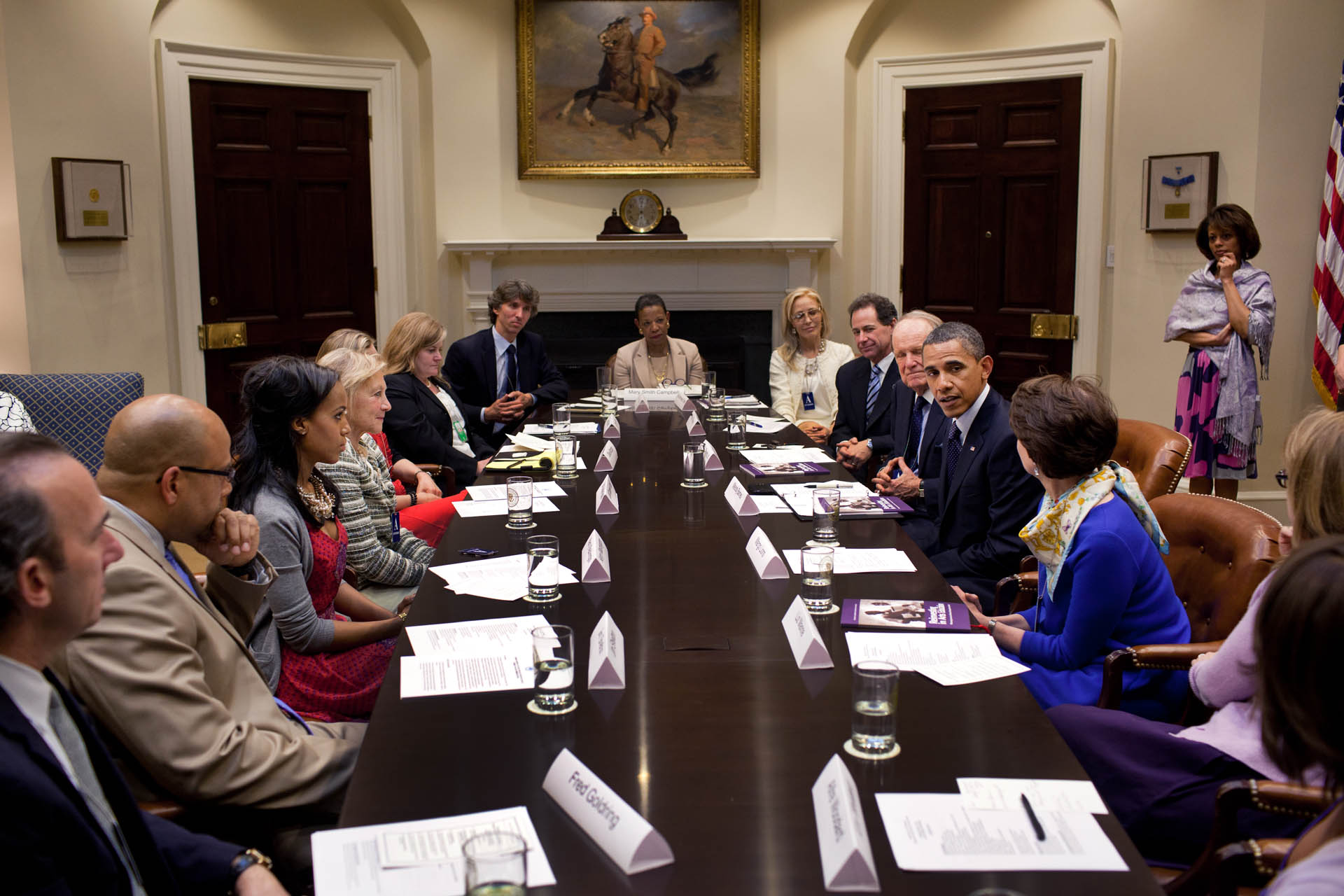
Over two years ago, when the President and the First Lady first arrived here at the White House they were adamant that they wanted the arts to be alive and well here at the People’s House. And they started inviting artists to visit and perform - jazz musicians, then country music stars, classical musicians, Latin singers and dancers, Motown greats and, just yesterday, America’s best poets and spoken word artists.
But it’s not all about artists coming here to play for the First Family. The President and the First Lady believe it’s imperative that the best, the brightest and the most creative should share their talents, their secrets, their successes – their failures -- and teach and inspire the next generation, like Elizabeth Alexander, Rita Dove, Billy Collins, Kenny Goldsmith, Alison Knowles, and Aimee Mann did yesterday at an afternoon student poetry workshop in the State Dining Room.
The arts are not just for those who go on to become professional artists. Research shows that girls and boys, young men and women who have art classes are more likely to be engaged in their classes, attend school, achieve better test scores, and graduate. In fact, just last Friday, the President’s Committee on the Arts and the Humanities released a stellar report, Reinvesting in Arts Education: Winning America’s Future Through Creative Schools, which details the powerful role that arts education strategies can play in closing the achievement gap, improving student engagement, and building creativity and nurturing innovative thinking skills.
Education is one of our nation’s most important investments. And an education without the arts is incomplete. As a candidate, when President Obama spoke about remaining competitive in the global economy and the importance of innovation, he said that meant not only teaching our children science and math skills but also encouraging them to think creatively and be rewarded with all that comes with being engaged in creative endeavors: the awareness that comes with self-expression; the sense of strength that comes when you share your authentic voice; and a fresh, innovative perspective on problems of all stripes when you’re using all of your brain. Failure to invest in a well-rounded education for our children will thwart our efforts to lead in a new economy where critical thinking and creativity will be the keys to success.
That means that arts education can’t be an afterthought — an investment that our schools can make only after they’ve solved all the other challenges they face. Instead, we must see it as a tool for keeping students more engaged, for closing achievement gaps and lowering dropout rates. My office, along with the Department of Education, is working with the President’s Committee to take next steps on the report’s recommendations and work with other government, private and philanthropic partners as well to realize a complete and competitive education – from cradle to career – for all children.
Melody Barnes is the Director of the White House Domestic Policy Council
Read the full report from the President’s Committee on the Arts and the Humanities here. A summary of the report is also available here.



